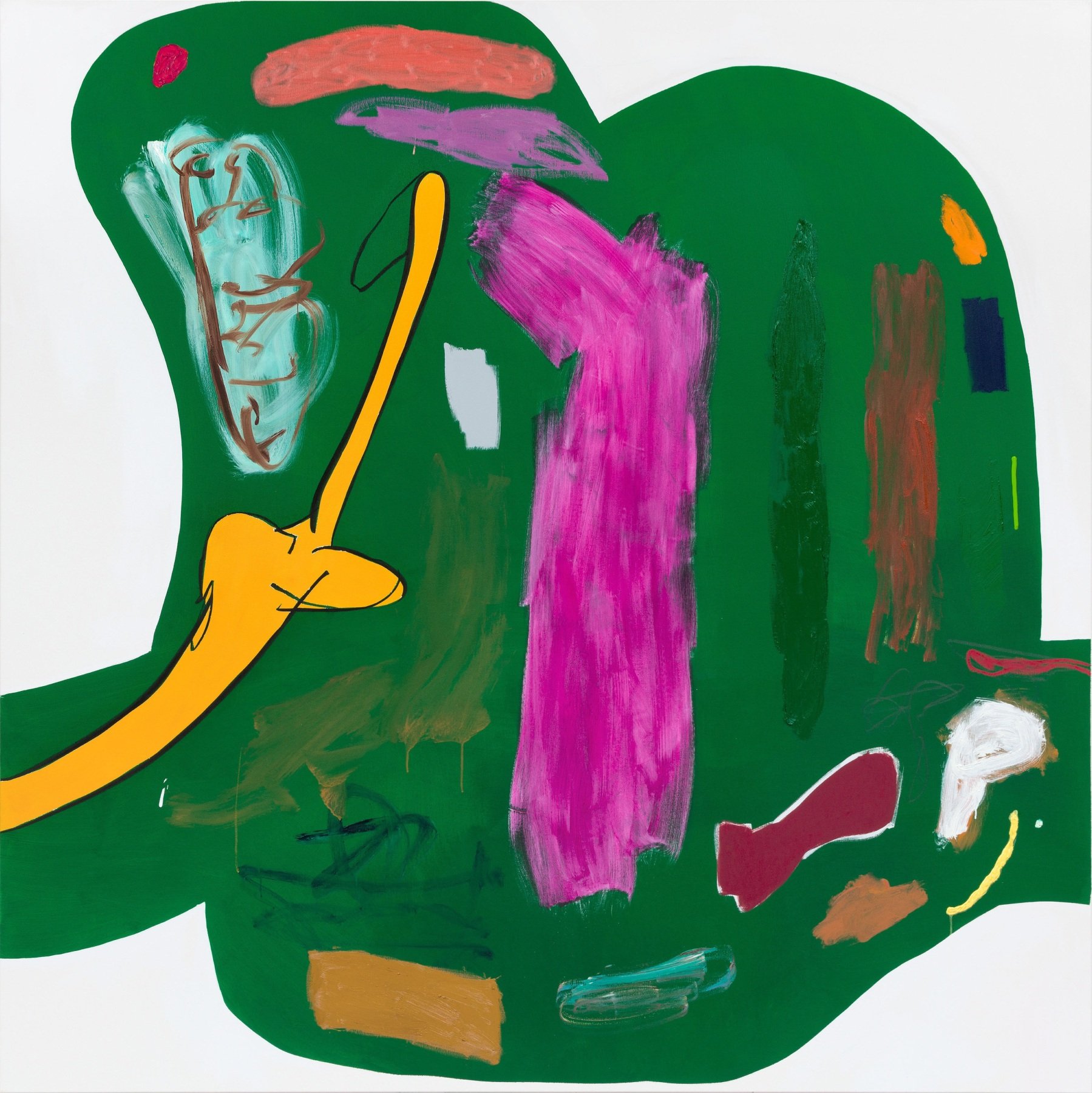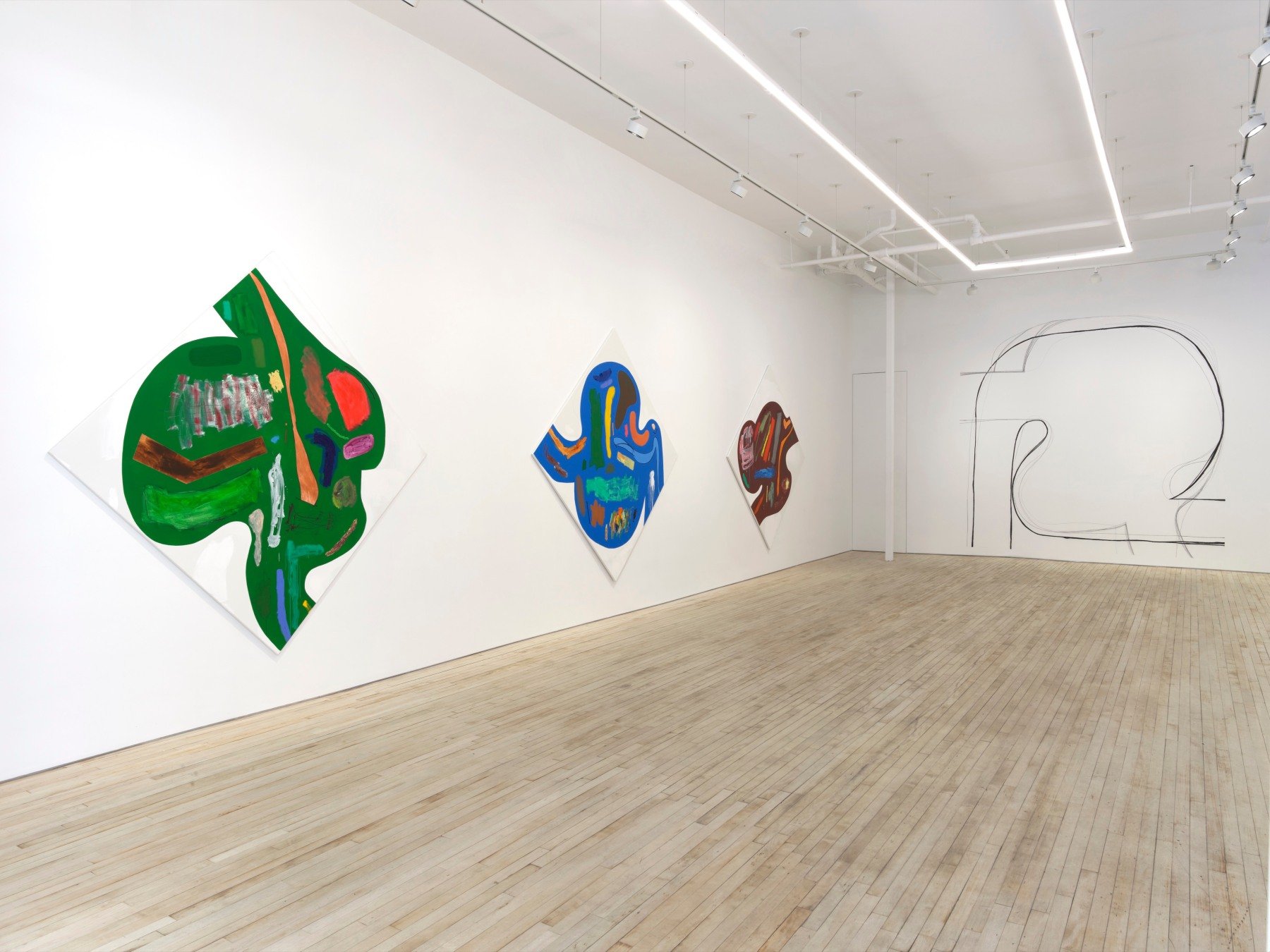TRANSFER -MODELING INFORMATION (PROGRESS)-
Nino Mier Gallery presents TRANSFER –MODELING INFORMATION (PROGRESS)–, an exhibition of new paintings by German artist Andreas Breunig. His third with the gallery, the exhibition will be on view in Tribeca.
March 15 – April 20, 2024
In TRANSFER -MODELING INFORMATION (PROGRESS)-, Breunig introduces new structures to his characteristically propulsive abstractions. Each work, titled a numbered version of Protest Paintings / Miller-Urey paintings, is square format, with some tilted to form a diamond shape. Monochromatic, curving forms—like liquid spilled on a surface, gas filling a space, or floating amoeba—blossom within each composition, their exterior margins remaining unpainted.
Breunig’s paintings have long been grounded in control and possibility, resulting in compositions that are both bodily and searching. To direct this painterly mode, he introduces new rules into his process with each series, many of which dissect painting’s materials and representational paradigms. These localized bursts of expression are made with acrylic, oil, charcoal, and graphite, imparting a multiplicity of texture, saturation, and surface qualities to the works.
In TRANSFER –MODELING INFORMATION (PROGRESS)–, Breunig asks how information is generated, shaped, and developed, particularly in the context of scientific knowledge and its impacts on society. How do we respond to information—sociological developments, scientific clarities—that may be difficult to represent or comprehend?
The Miller-Urey experiment recreated early Earth conditions like gas and simulated lightning to understand the origin of life. The experiment produced amino acids, the building blocks of proteins, suggesting that the basic components of life could form spontaneously. Breunig draws on this experiment as a way to address his questions about knowledge and its evolution because of its simplicity and broad impact.
“The strength of this series lies in making present an absence,” writes Maria Chiara Valacchi in The Divided Self: The Explanatory and the Primitive Power of Painting. This manifestation relates to the mechanics of life discovered in the Miller-Urey experiment, as well as to Breunig’s ability to capture on canvas what is ultimately unrepresentable.
“Still,” Valacchi concludes, “the ‘protest’ Breunig employs is not only of a formal matrix; his affinity to abstraction brings us to uncover yet another profound truth related to something more individual: the relationship each of us has to knowledge.”


